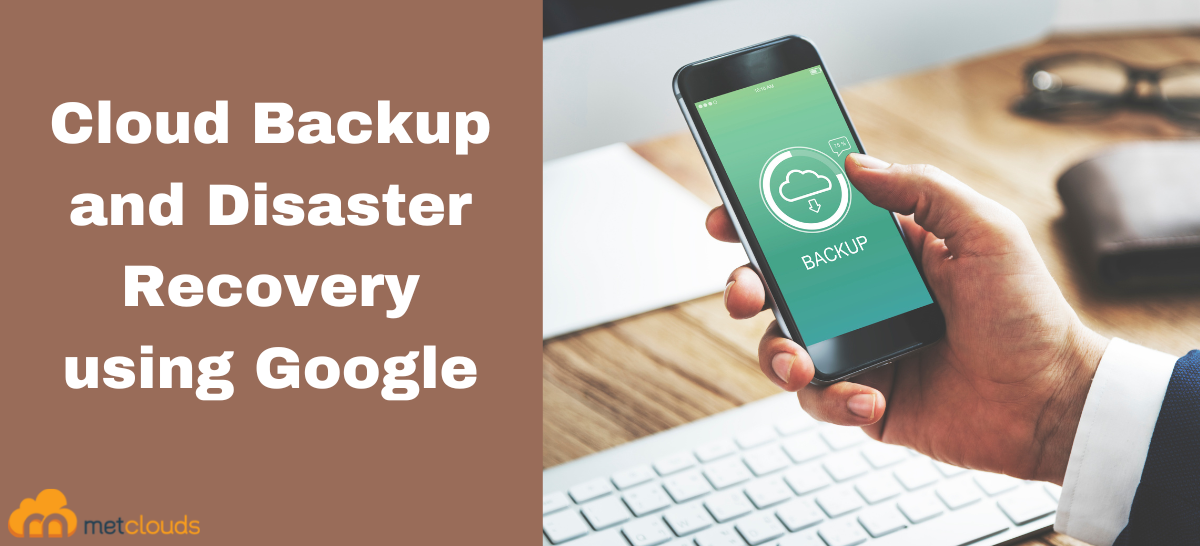Data and applications of a business’s server are backed up and stored in a remote server to keep them readily available during a system failure or disaster. Cloud Backup is a service to copy and store data or applications from one server to other servers in another physical location. This cloud backup makes it easy for disaster recovery. Disasters can be power failures, power or network outages, system failures, natural disasters, accidents, cyber-attacks, and software updates. And now, enterprises can do Cloud Backup and Disaster Recovery using Google Cloud.
Google Cloud Backup solves backup challenges by maximizing the backup value. Google Cloud Console with centralized backup management helps enterprises with reliable and fast backup recovery. Centralized management provides administrators to span multiple workloads from backups. Also, administrators can generate application- and crash-consistent backups for VMs on Compute Engine, VMware Engine, or on-premises VMware, databases, and file systems. Google Cloud Platform provides a holistic view of backups across multiple workloads, so you need to spend less time on management, and you will have complete and consistent coverage in your data protection.
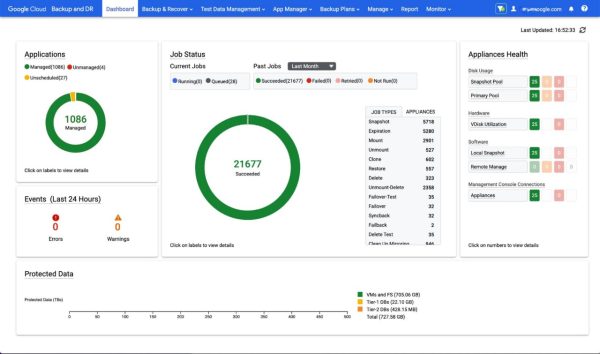
Dashboard of Google Cloud Backup and DR
Backup data stored in Google Cloud Backup and DR is in its original application readable format. So backup data is directly available from long-term storage without time-consuming data movement or translation.
Also, Google Cloud Backup and DR help to minimize the total cost of ownership of backups through space-efficient storage technology called incremental forever, which ensures users pay only for what they truly need. Google Cloud Backup and DR do the initial backup and the following backup stores data associated with the changes related to the prior backup. With incremental forever, backup is done quickly and reduces the network bandwidth needed to transmit data. Thus the storage and cost for backup are also minimized.
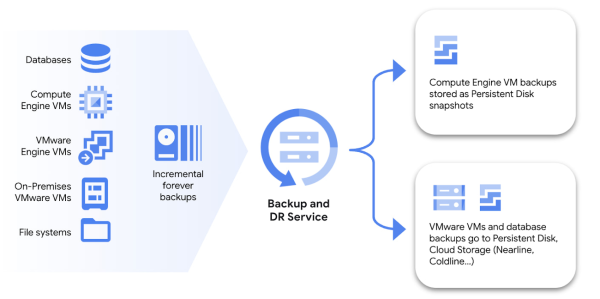
Additional features
- Without moving backup data to warm storage, VMware VMs and databases can instantly mount and access from a backup stored in cloud storage.
- During database backup, quiescing the database results in application consistency.
- Plan-driven data management with automated retention.
- Backup storage options are flexible.
- Ensures data security in transit and rest.
Steps to enable Google Cloud Backup and DR
Step 1: In Google Cloud Console, under the menu, navigate to Operations.
Step 2: Select Backup and DR.
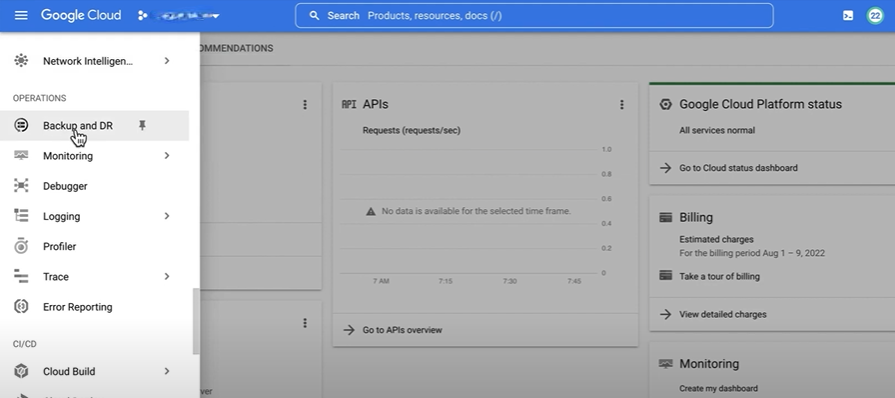
Step 3: In that, click on Enable. Then setup for Backup and DR wizard will appear.
Step 4: Under Activate the management console,
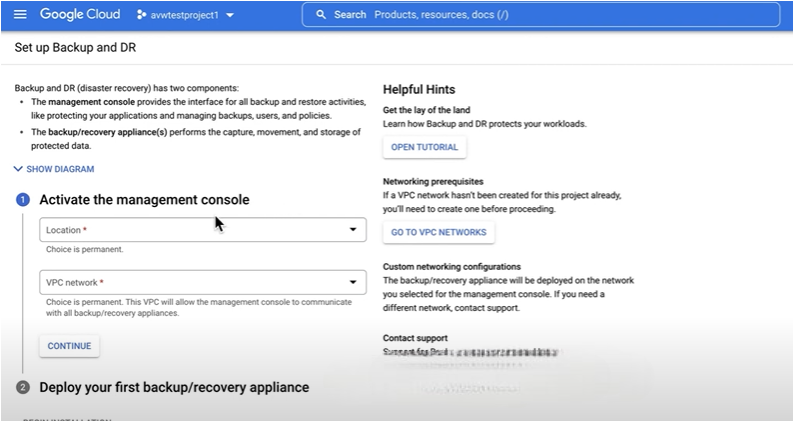
- Select the location for the management console, which will be the Google Cloud region.
- Select a VPC Network. If you don’t have it, the wizard will open for you to set up a Private Service Connection.
- Click Continue.
Step 5: In the Deploy your first backup/recovery appliance section,
- Select the target project where you have to deploy a backup/recovery appliance.
- Select the Region and Zone to locate backup/recovery appliances.
- Select the Subnetwork.
- Select a Storage Type for backup.
- Click on Begin Installation. Then you are redirected to the status page.
Step 6: After completion of deployment, click Log In To the Management Console.
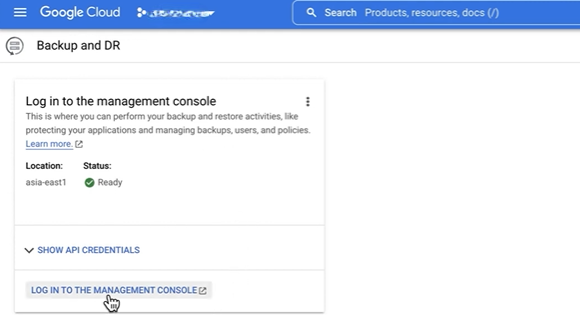
Now the management console will open a new window of the Dashboard of Google Cloud Backup and DR.
Conclusion
Today storage of applications and data on a business server is in cloud servers, so cloud backup is necessary for organizations. Cloud Backup and Disaster Recovery using Google make backups cost-effective and consistent data protection.
For a faster backup with minimal storage space, Metclouds Technology can help you to backup and recover your data using Google.


